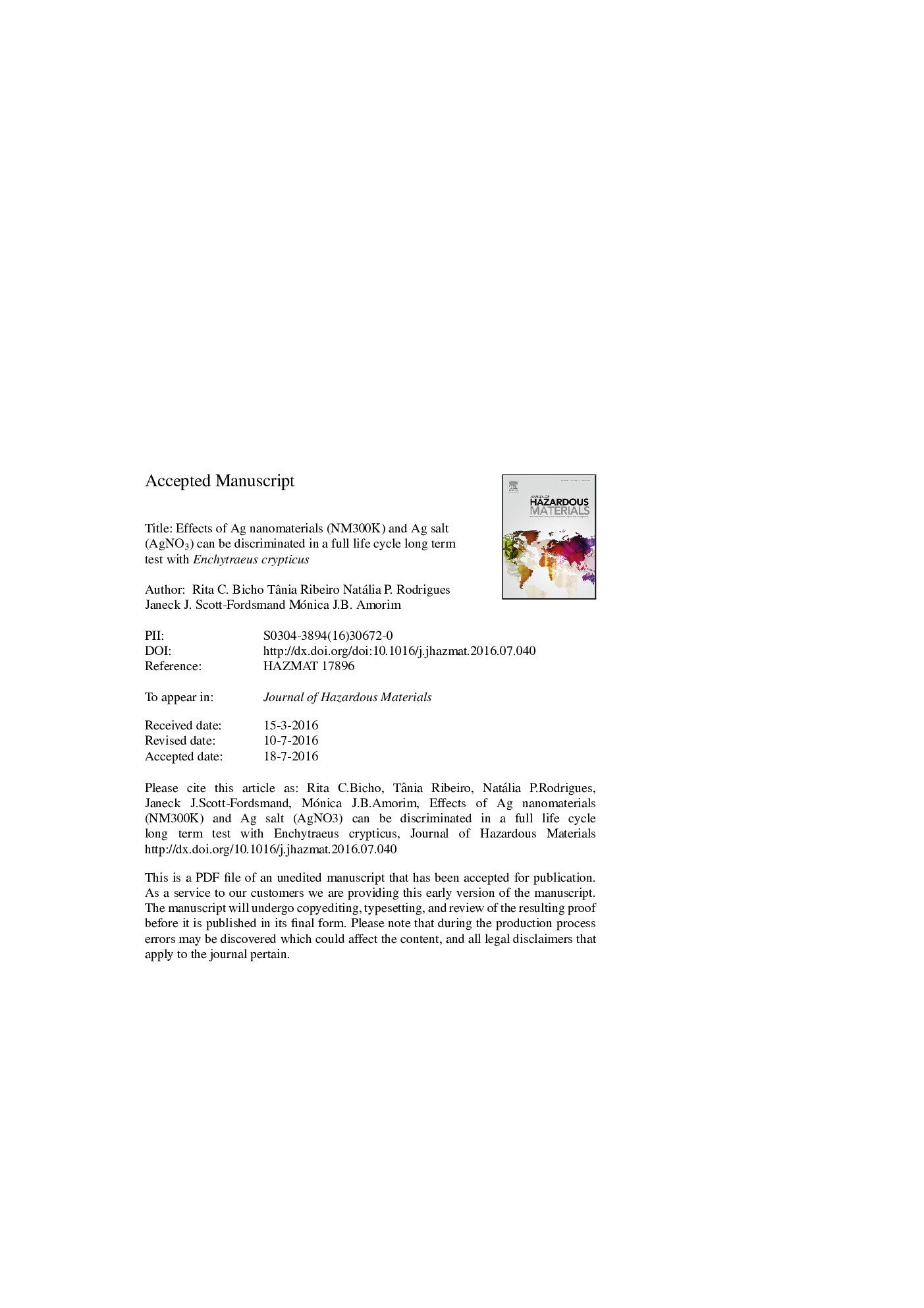| Article ID | Journal | Published Year | Pages | File Type |
|---|---|---|---|---|
| 6970216 | Journal of Hazardous Materials | 2016 | 21 Pages |
Abstract
Information on effects of silver nanoparticles on soil invertebrates, especially using long-term exposures, is scarce. In this study we investigated the effects of the reference Ag (NM300K) (compared to AgNO3) using the full life cycle test (FLCt) of the soil invertebrate Enchytraeus crypticus. Results showed that effects were higher compared to the standard reproduction test, which is shorter and does not cover the FLC. Both Ag forms caused a reduction on hatching success, juvenile and adult survival and reproduction with similar ECx. Differences between AgNO3 and Ag NM300K could be discriminated using the FLCt: AgNO3 decreased hatching success was shown to be a delay in the process, whereas Ag NM300K caused irreversible effects during the same time frame. These effects may have occurred during the embryo development, hatching (inhibition) or survival of hatched juveniles. Ag NM300K caused non-monotonic concentration-response effect as observed by the high effect of the lowest concentration (20 mg kg-1). It is known that dispersion is higher at lower concentrations - this could explain the increased effect at low concentration. Non monotonic responses are well described in the literature, where effects of high cannot predict for low concentrations, hence special attention should be given for NMs low concentration effects.
Related Topics
Physical Sciences and Engineering
Chemical Engineering
Chemical Health and Safety
Authors
Rita C. Bicho, Tânia Ribeiro, Natália P. Rodrigues, Janeck J. Scott-Fordsmand, Mónica J.B. Amorim,
